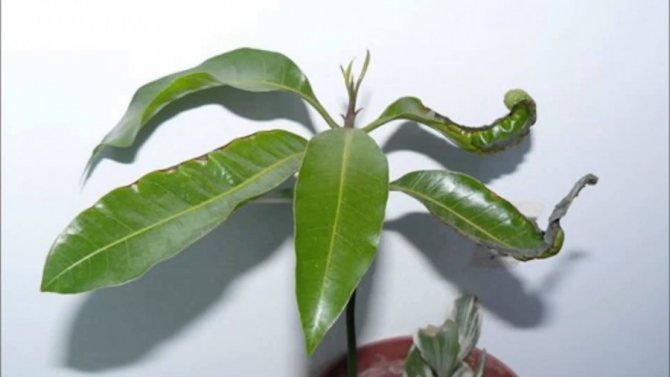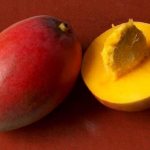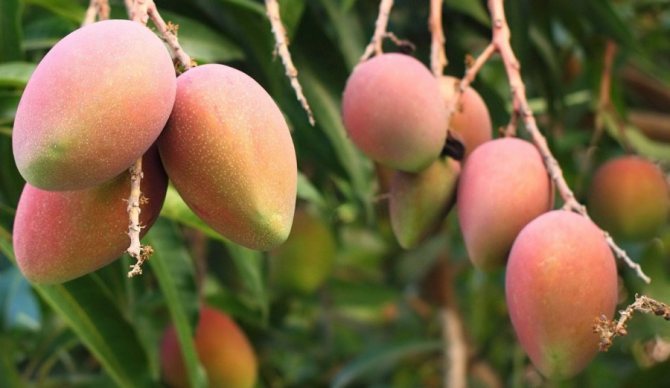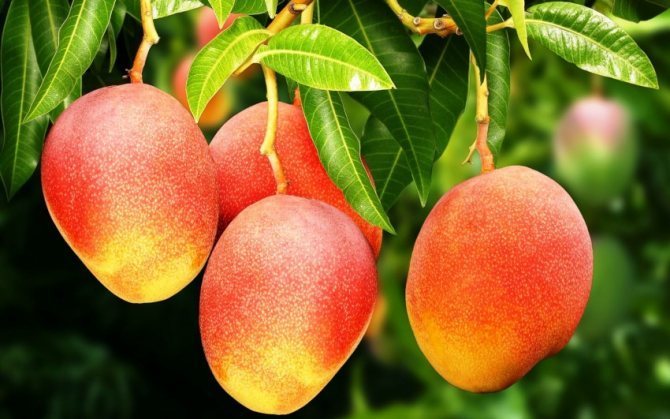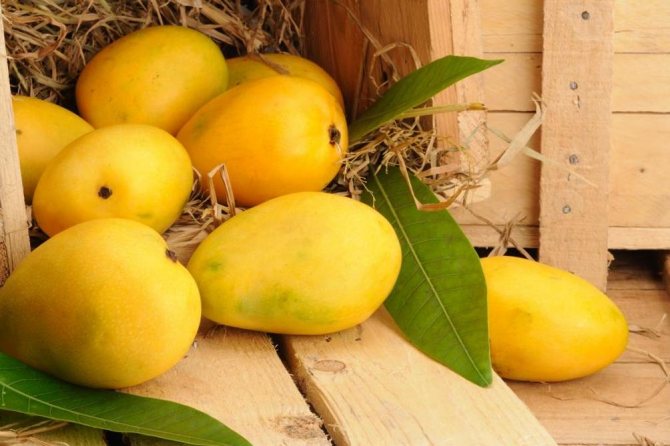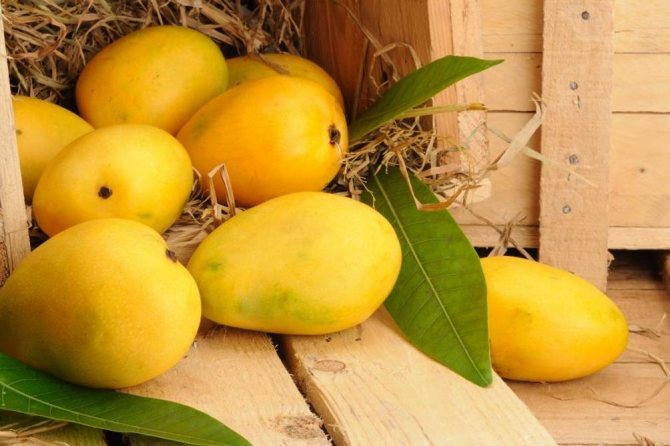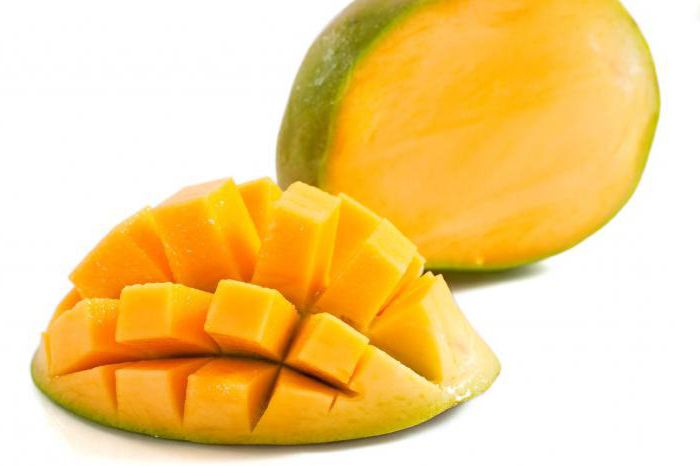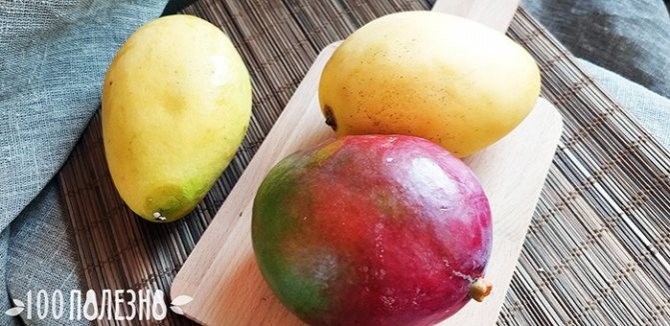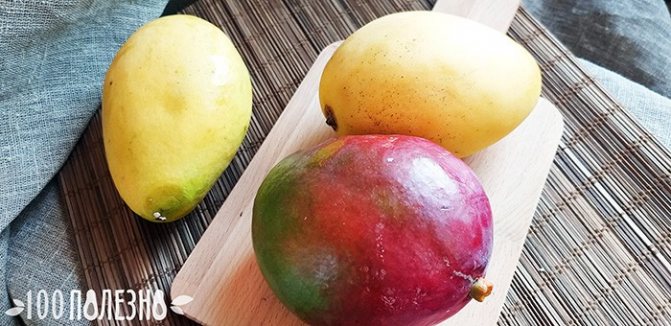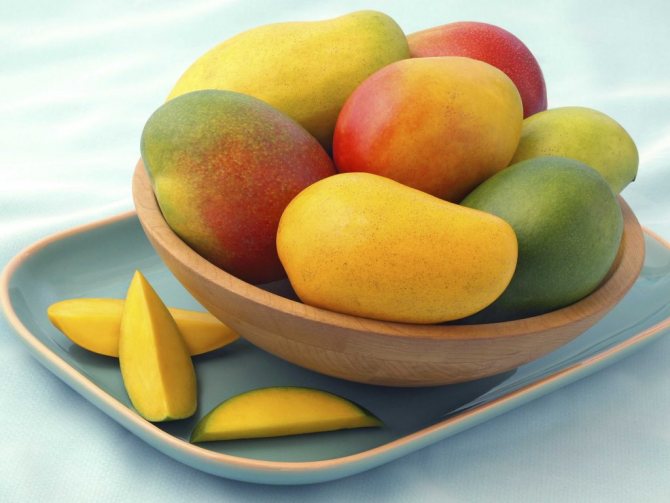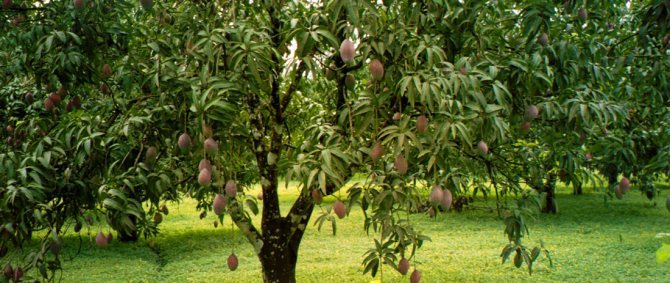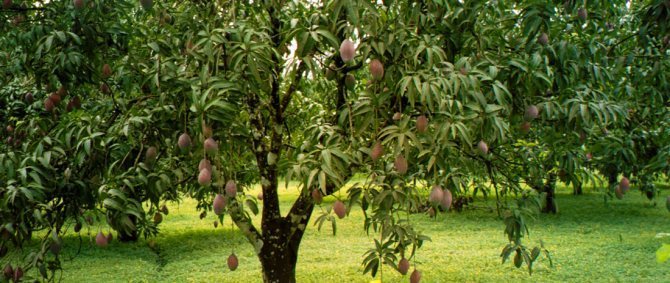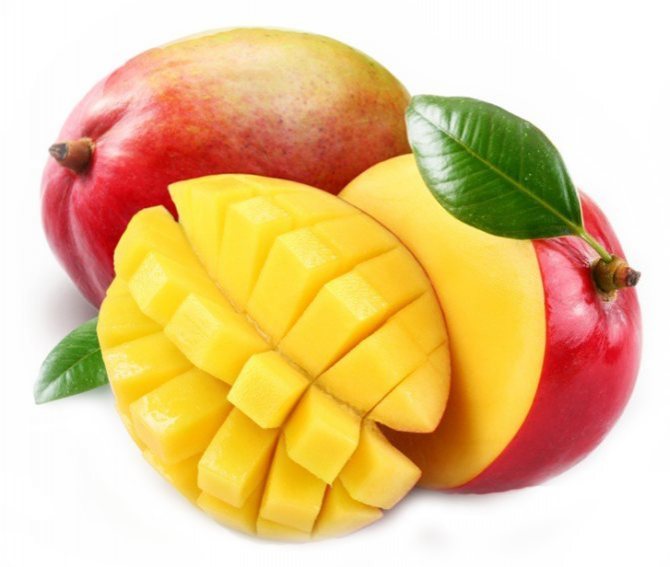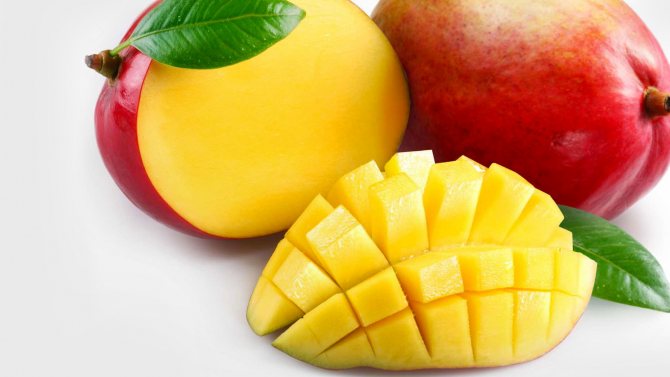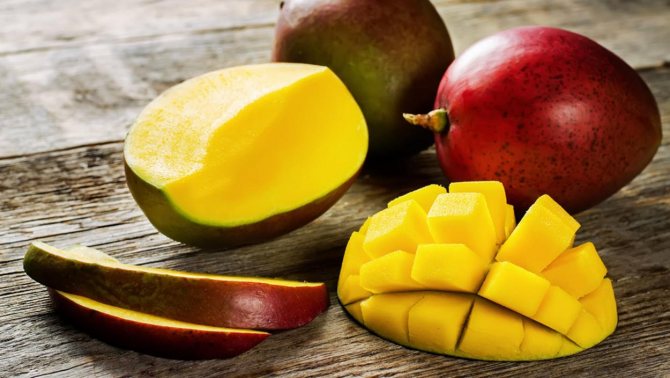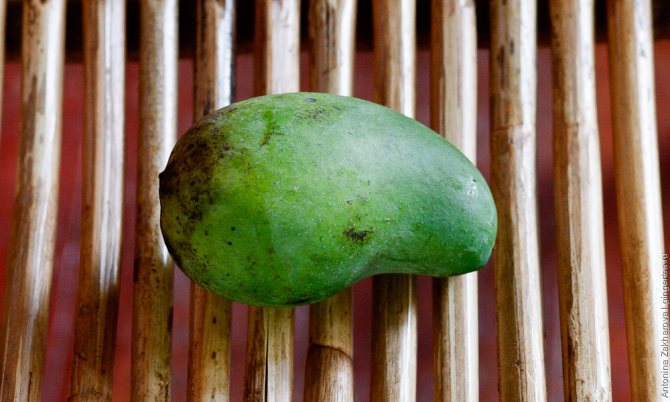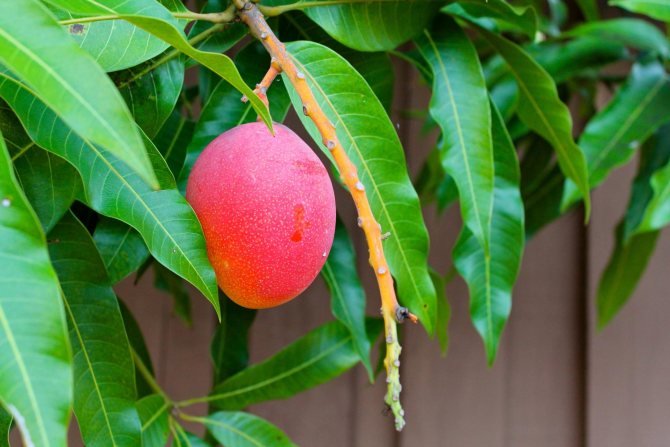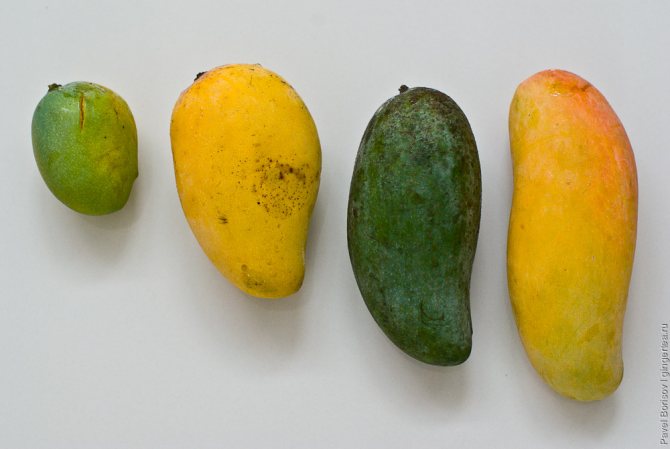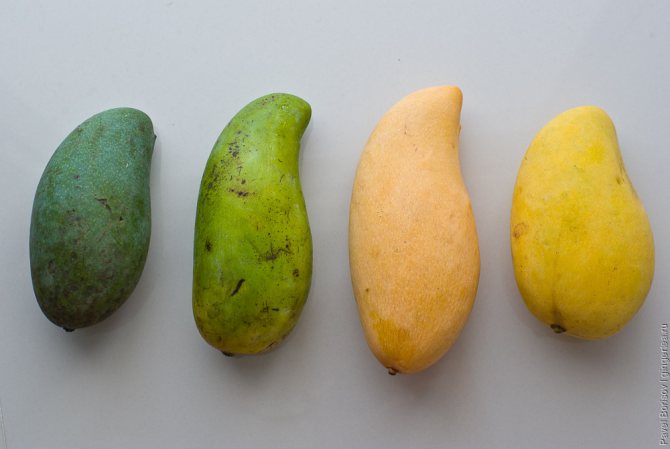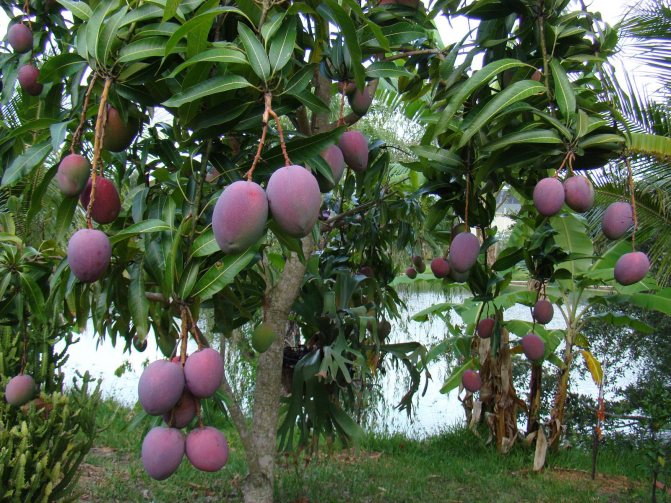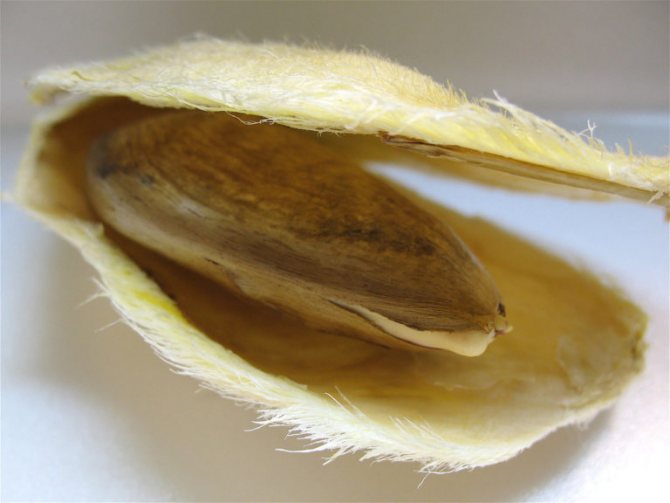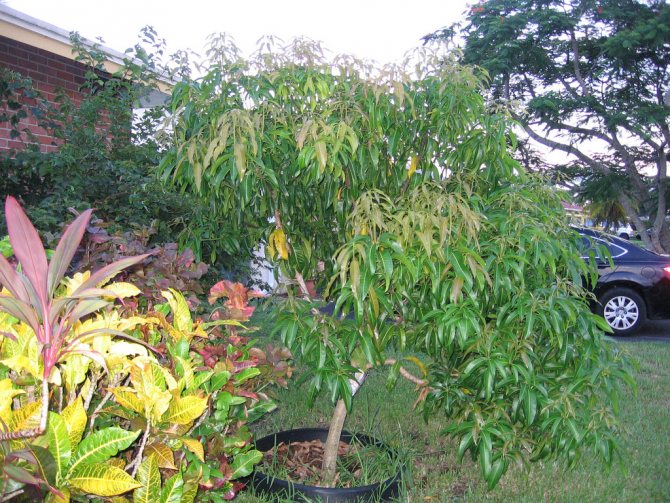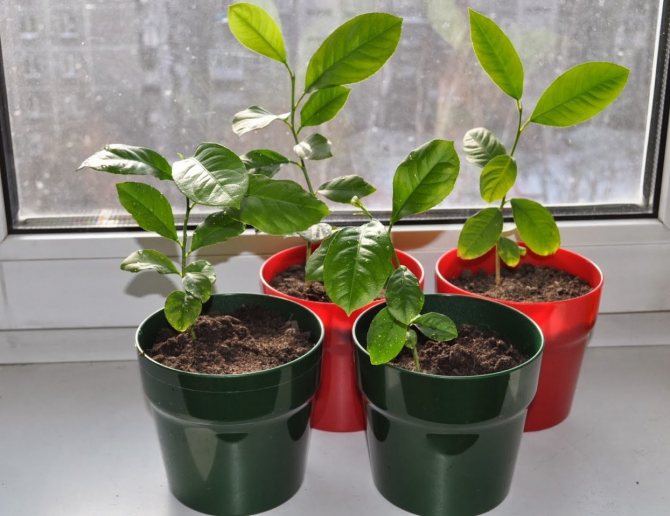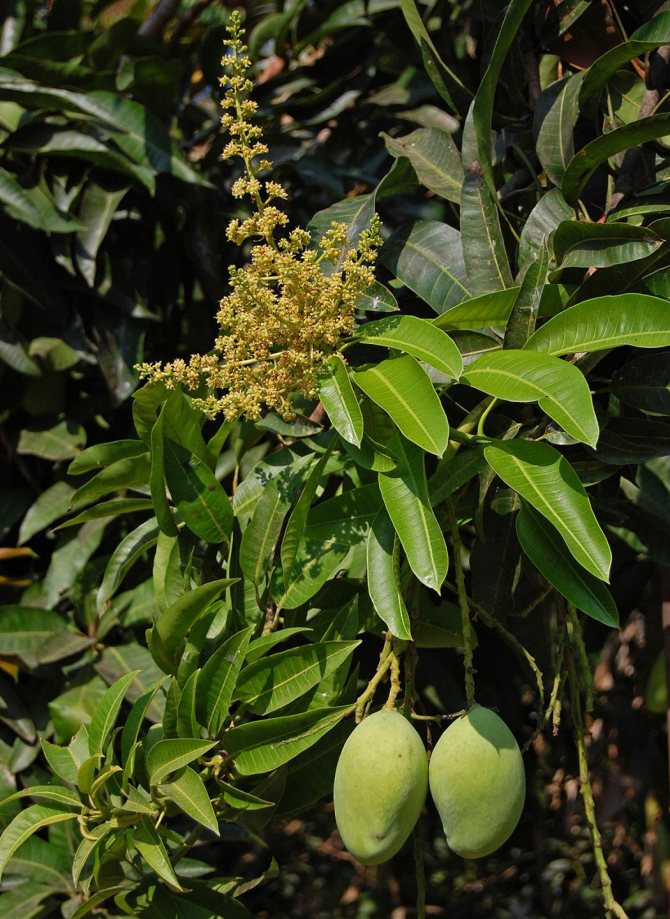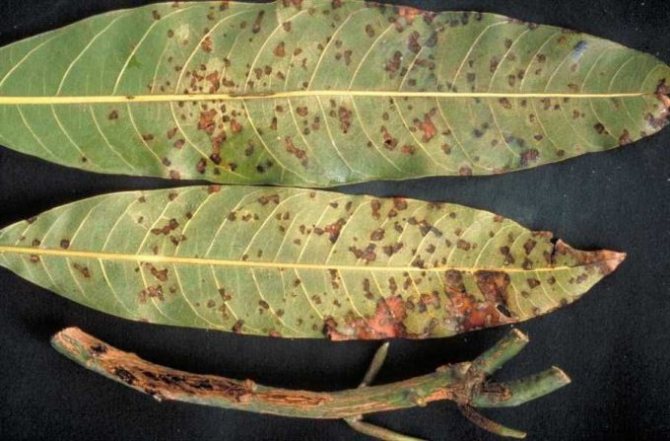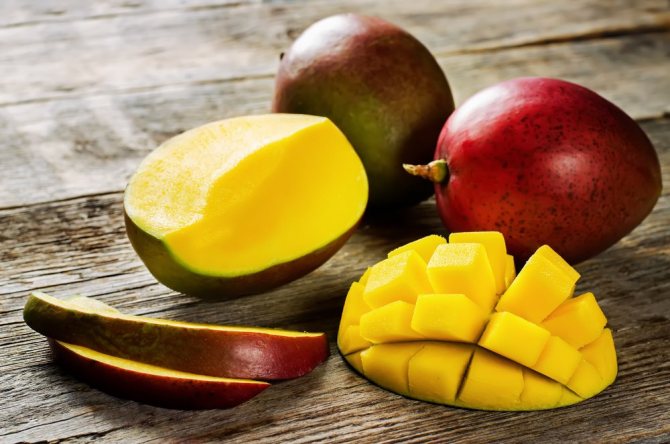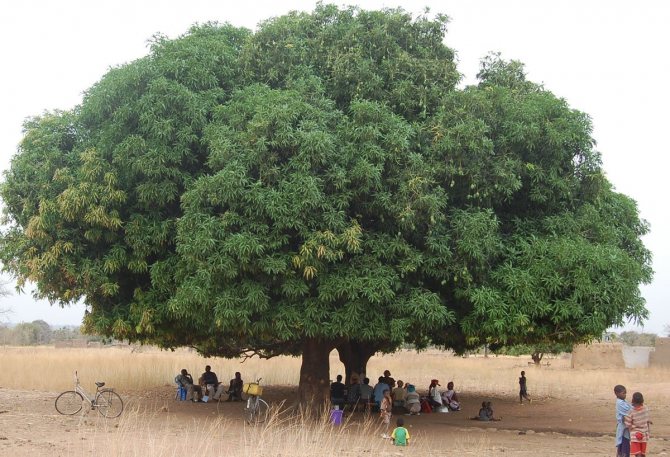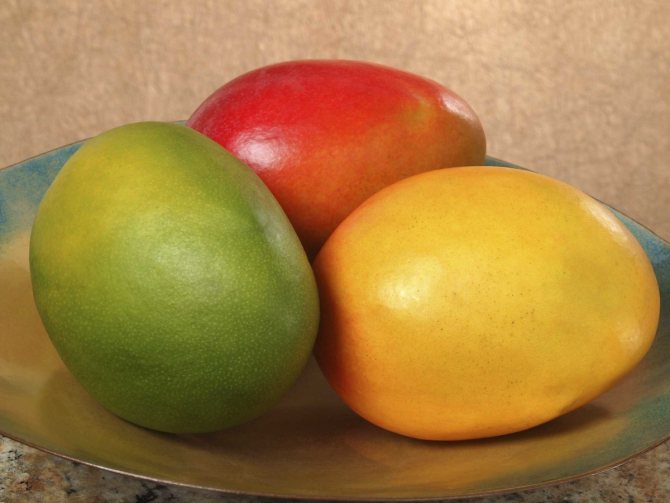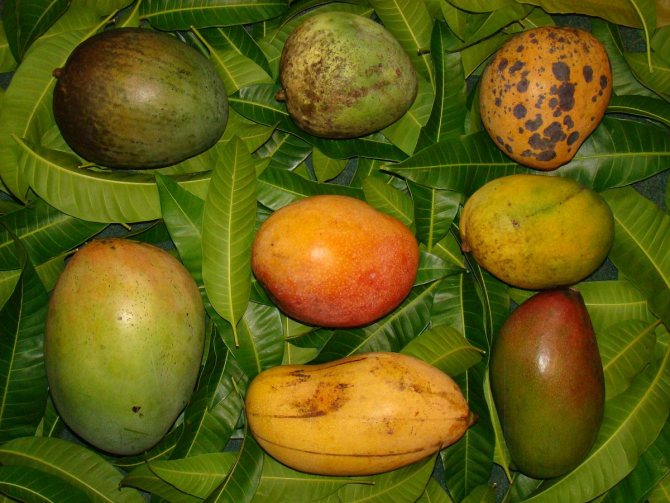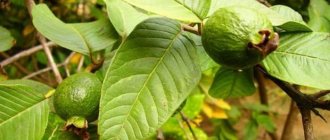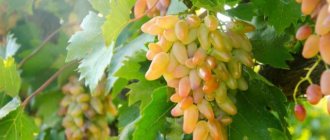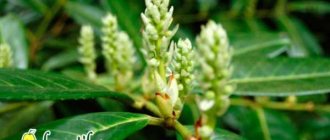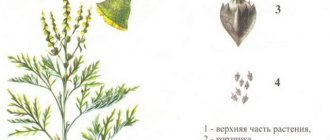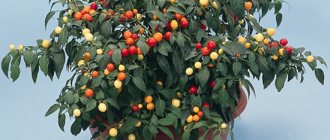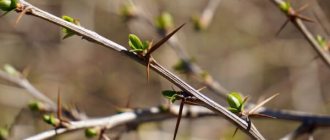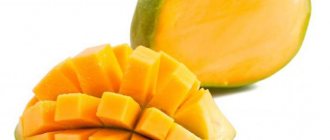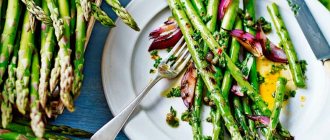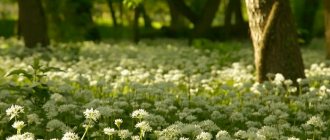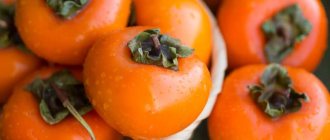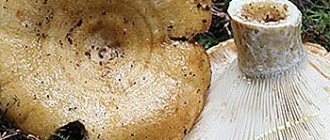Today we will tell you about such an unusual and exotic fruit as mango, whose homeland is, oddly enough, India. If we translate its name from Sanskrit, we get the designation "Great Fruit". Indeed, this is so, but we will explain why a little later. There is a legend about its origin. The mangifera tree, the fruit of which is mango, was raised by Shiva for his beloved and gave her a wonderful taste of fruit. Very romantic. Today it has become the divine tree and emblem of the nation of India. The second name of the fruit is "Asian apple", as it is called in Southeast Asia. Every year, 20,000,000 tons of fruit is provided for export from the South Asian region alone.
Mango in botany
Mango is a fruit. Its description is as follows: an evergreen tree, reaching up to forty meters in height. There are also dwarf varieties. Young leaves have a pleasant reddish color, while mature leaves are dark green. Flowers are small, yellow, gathered in small panicles. The fruits have a yellow-orange flesh with a smooth skin. Some varieties of this plant can be pollinated on their own. If the temperature at night is below 13 degrees or there is a high level of humidity, the fruits simply will not set. Fruit seeds can also be eaten fried or boiled. The tree is very fond of light and air, which is why it is planted in an open area.
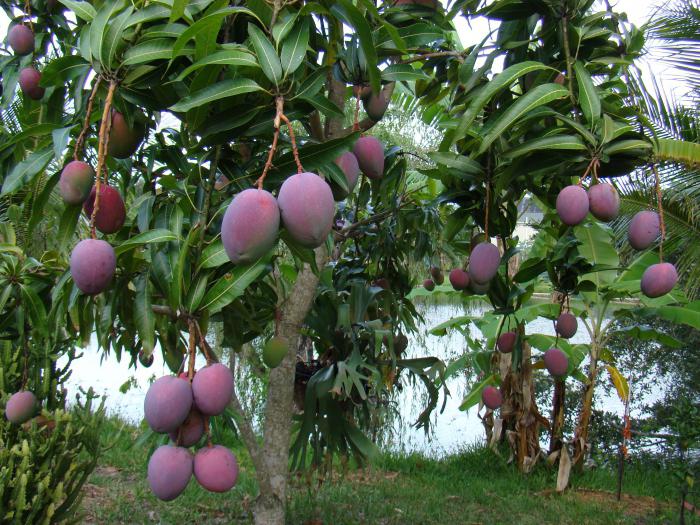
Weight
Depending on the variety, the weights of mature mangoes can vary significantly. However, it is quite easy to determine the quality of the fruit by establishing the relationship between the size of the fruit and its weight. So, if, when placing this fruit in the palm of your hand, you feel that it is much heavier than the weight that would be optimal for the size of the fruit, then this can only indicate the good quality of the mango, as well as its ripeness.
If possible, you can even compare the weights of fruits of the same variety, one of which is ripe and the other unripe. It will not be difficult to notice that the mass of fruits that are identical in size will vary significantly.
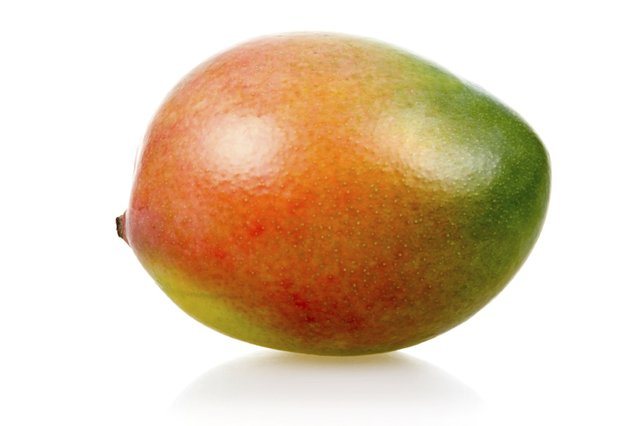

Sun Fruit Benefits
As we already know, the mango fruit is a fruit. The description of its beneficial properties is endless. It contains many vitamins and substances that help the body cleanse itself of toxins, toxins, maintain skin condition, etc. The fruit contains a colossal amount of vitamin C, up to 175 mlg. per 100 g. But only in certain varieties. The fruit also contains xylose, sucrose, fructose, glucose, sedoheptulose, mannoheptulose, maltose (natural sugars). There are a lot of minerals in the composition of the Asian apple. These are phosphorus, iron, calcium.
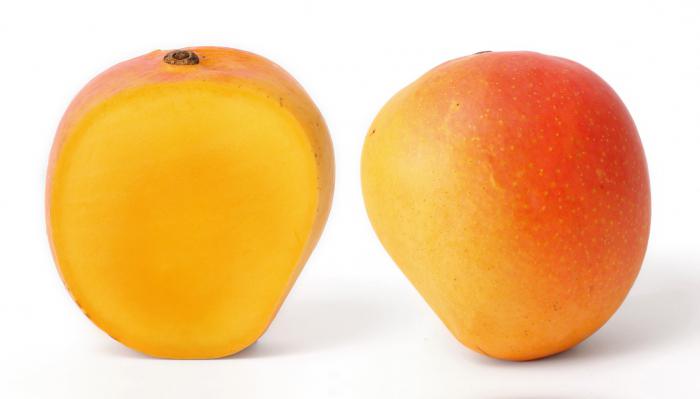

Scent
How to identify a ripe mango? Fans of such a fruit note that this can be done by its aroma: the more intense and sweeter the smell, the more ripe the fruit.
In order to determine the maturity of a fruit, it is necessary to smell it in the area of the stalk - there the aromatic properties manifest themselves most intensely. As for the distinctive features of the aroma, it resembles the taste of mango. This is due to the fact that the perception of taste and aroma is closely interconnected.
In the event that a sour or, worse, alcoholic smell is emitted from the mango stalk, then you should refuse to buy the product - this smell is a sign that the fruit has begun to rot, which is why its taste will be simply disgusting. This feature of the fruit is associated, first of all, with the increased sugar content in the fruit, which, when overripe, causes the process of active fermentation. This is what determines the presence of an unpleasant alcoholic smell.
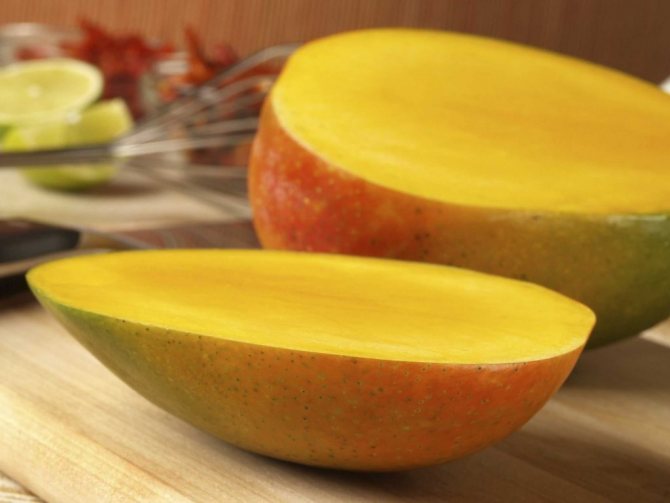

Mango. Description of the fruit from a medical point of view
Miracle fruit - this is what doctors call mango in Thailand. The leaves of this beautiful tree are used as a powerful tranquilizer in medicine, and the fruits are a storehouse of tannin. Not only leaves have healing properties. Decoctions are made from different parts of the tree and are treated for several cancers, for example, of the genitourinary and reproductive systems.
It is also used to strengthen immunity, heal skin cells, slow down the aging process. The fetus is believed to prevent and relieve stress, tension and improve mood. As we said, mango fruit. We will not give a description of the increase in the sexual activity of partners when taking it for food, the only thing we will say is an excellent aphrodisiac.
Dyspepsia, dysentery, diarrhea, hemorrhoids, constipation perfectly heals the pulp of an unripe mango. For cooking, you should mix it with salt (1 teaspoon) and honey (2 tablespoons). This mixture will also help remove stagnation of bile, only with the replacement of salt with pepper.
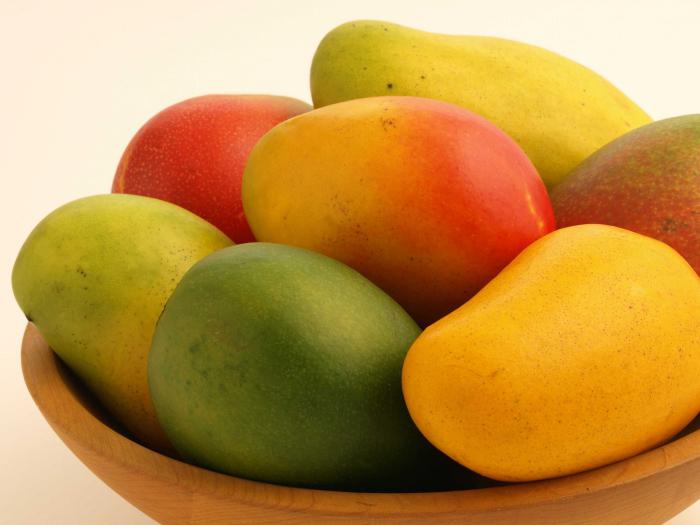

Ripe mango improves eyesight and helps prevent various diseases. Europe uses this fruit to heal and strengthen the heart. For this purpose, the patient is given a portion of the mango (several pieces), and he keeps it in his mouth as long as possible, or is given a decoction of this fruit to drink.
China has gone a little further. There, plague and cholera are treated with an Asian apple. Decoctions are used for laxative and diuretic effects. In addition, it is given for the treatment of asthma, acute dermatitis, and stopping internal bleeding.
What else is the fruit used for? 1) Mango (the description of the plant was given above) is used to remove toxins and restore the skin. The pulp of this fruit is very fibrous. It contains a lot of liquid as well as minerals. This stimulates the intestines and kidneys, namely their activity.
If you decide to arrange a fasting day for yourself, then mango will help you remove excess and improve metabolism. Mangifera fruits contain huge amounts of beta-carotene. It is a natural antioxidant that protects our skin from negative factors. There are many mango-based face masks available. It also perfectly nourishes the hair and gives it shine.
2) For high blood pressure - mango. Description of the fruit Mango, if taken on average, weighs about 650 grams, but there are fruits and more. A fruit of this weight provides a third of the daily requirement for a person's need for potassium. It perfectly lowers blood pressure and strengthens the walls of blood vessels. Mango juice is used in a diet, when treating or preventing atherosclerosis.
3) Disrupted sleep, stomach ache? Eat a mango - it will go away. Exotic mango is a fruit. We have given a description of the plant above. Now we will talk about its effect on the nervous system and the treatment of the stomach. For insomnia, doctors recommend consuming a soothing mixture of banana, mango, and yogurt. Simple mango juice in small doses before bed also helps.
This fruit contains a lot of vitamin A. It protects the stomach lining. With gastritis, this is an excellent remedy, but do not overuse mango, it can weaken the body. If you are constipated, eat 2 fruits and you should be fine. Remember, everything is useful in moderation. Fruit acid improves digestion, which is also good for the stomach.
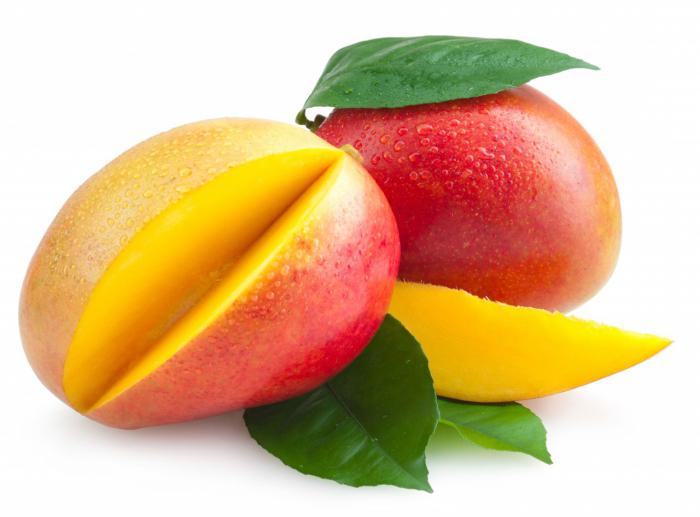

The form
When choosing a ripe mango, you need to pay attention to various factors, one of which is the shape of the fruit. It should be understood that it can be more rounded or, conversely, oblong - it all depends on its grade.
Practice shows that most of the fruits of this fruit are quite large in size. Connoisseurs of this fruit strongly do not recommend purchasing small fruits - they do not have the same value as large ones. The fruit has excellent qualities, which looks well poured and has the greatest roundness.
Particular attention should be paid to the location of the stalk in the fruit: its elevation indicates the ripeness of the fruit, and the presence of a slope only indicates readiness for ripening. Moreover, in the second case, we can say that the pulp of the fruit has not yet been filled with sugar enough - by this sign, one can understand whether the mango will be sweet or not.
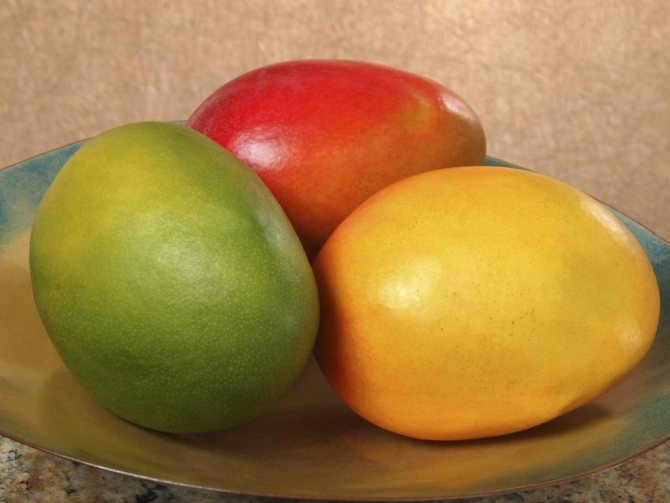

Cooking
Mango is in great demand in Thai cuisine. The fruit's flavor description ranges from very sweet, sweet and sour to coniferous. Yes Yes. It is coniferous. The mango peel smells like, how shall I put it ... a tree. This is all because the fruit grows on a coniferous tree. In Thai cuisine, mango fruit is consumed in any form. We will not give a description of the dishes, we will only say that it is found not only in desserts, but also in vegetable, meat salads, sauces, and gravies. It can be fried, boiled, stewed, and Thais love to do it with meat, fish, rice. Another popular dish is mango pies and pies.
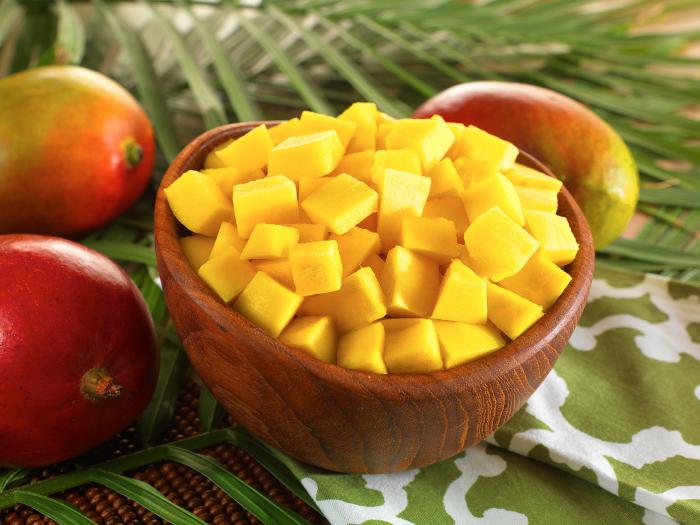

Mango: how to choose a ripe fruit and how to eat it?
The most delicious fruits are yellow. You don't see them often. I took mine in a Vietnamese cafe. The taste pleased: sweet, juicy with a pleasant aftertaste.
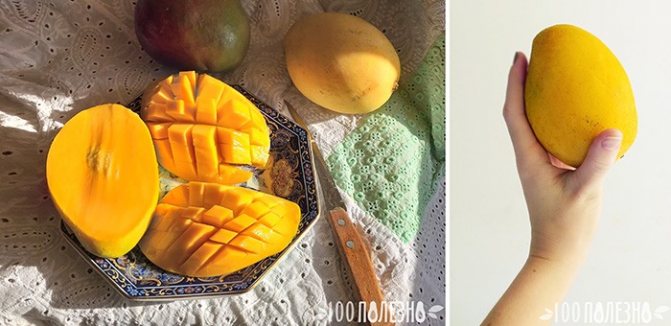

A more popular option is red-green fruits. They are usually sold immature. You will have to wait a bit before enjoying. They quickly reach a condition in room conditions.
Color is not the only selection criterion. A quality mango has:
- pleasant aroma,
- smooth peel without spots and damage,
- moderately soft surface,
- weight 200-300 grams.
Mango: how is it eaten?
It is a stand-alone dessert or base for fruit snacks. The berry is not cheap, so it is better to enjoy it "as it is", fresh. Heat treatment is not prohibited. Mangoes are baked, stewed, fried.
Juice is squeezed out of them, smoothies are prepared, added to baked goods. They are combined with chicken, beef, seafood. Mango is “friendly” with dairy products and vegetables.
Before use, the fruits are washed, dried with a napkin, cut into three plates. In the central one, a bone remains. It takes up a significant part of the volume. The skin and the edible part are cut off from it. From the other two, take out the pulp with a teaspoon. This is the best solution if the fruit is ripe and you eat it at home.
Hard specimens are cut and sliced like a melon. The bone is removed with a short-blade knife.
Soft fruits are more difficult. Without peeling the peel, cut it lengthwise into three parts. The central one with the seed - set aside. The other two - cut crosswise so as not to damage the peel. We turn it inside out, cut the cubes. We clean the middle around the perimeter. We separate everything edible with a knife.
Don't eat the skin!
Like cashews, it contains the toxic urushiol resin. For some, it causes allergies even when it comes into contact with the skin. Be careful.
How to save?
The mango will stay in the refrigerator from a week to a month. The exact time depends on the degree of maturity. The longer it is stored, the less flavor remains.
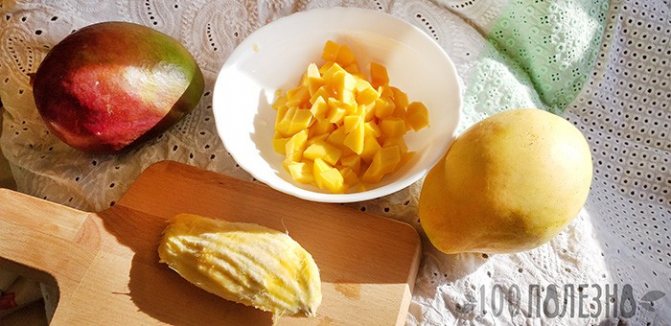

If you have an unripe fruit, place it on a windowsill. In a dark, cool place, it will not ripen. Wait a few days. To speed up the process, place it next to a red apple.
Interesting Facts
- the mango tree in India is a symbol of love, some people even believe that it grants wishes;
- India is the world's largest supplier of mangoes;
- mango leaves are poisonous and should not be eaten by animals. Trees should not be burned, as poisonous fumes are harmful to the lungs and eyes;
- many Asian kings and their nobles had their own mango groves, a sign of high social status;
- mango leaves are traditionally scattered at the wedding so that the life of the young is fertile. During the celebration of the boy's birthday, leaves are hung in front of the entrance to the house;
- on holy days, Hindus rub their teeth with a sprig of mango;
- green fruit contains more vitamin C than ripe fruit. When ripe in mango, the amount of vitamin A increases;
- botanical relatives of mango are pistachios, cashews, poison sumac and Jamaican plum.


Appearance
Outwardly, the mango tree looks very majestic: it can grow up to 30 meters long, and with a wide rounded crown over the years it grows up to 40 meters wide, straightening and thinning towards the top. The root on well-fertilized soil is able to go 6 meters deep with the germination of supporting stem branches.
The mango tree is practically an evergreen long-liver: it can grow and bear fruit for 300 years. It looks very beautiful during flowering, densely covered with small flowers of yellow or red shades. The shape of the fruit can vary in shape, color and quality. Round, oval, oblong - they are almost always somewhat curved. The size of the fruits can vary between 7-25 cm. By the color of mangoes, there are green, yellow, pink, red and even grayish and lilac shades when ripe. The pulp can be either pale yellow or bright orange. Inside the fruit there is a yellowish-white flat oval stone, from which, by the way, a tree can be grown.
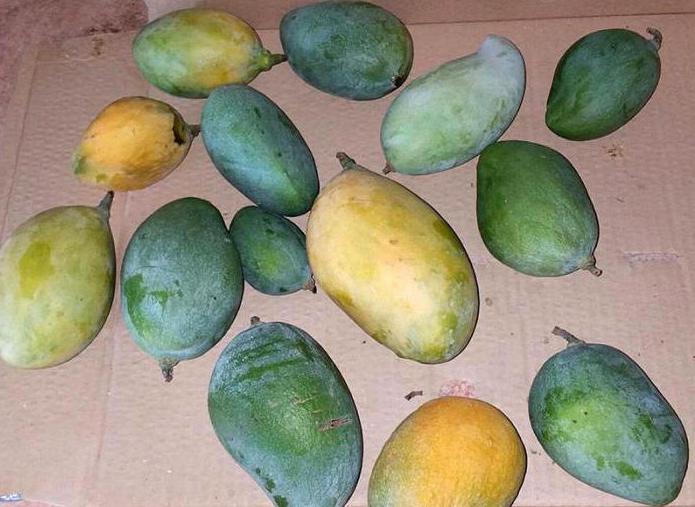

Harmful properties
An excess of something necessarily leads to negative consequences. So, with excessive use of this fruit, intestinal upset can occur. Eating more than 2 fruits per day, you may experience an allergic reaction, which is manifested by a rash all over the body. Tingling pains in the abdomen and irritation of the throat may also appear.
Mango is an exotic product, therefore the body needs to adapt to it. You should not use it for people with sensitive mucous membranes, and for those who develop individual intolerance. Avoid mangoes and diabetes.
Growing from a bone
Mangoes can be grown at home. It will not be as high as in natural conditions, its fruiting is also a big question, but you will get pleasure from the process.
- In the spring and summer, purchase a mango fruit. It is better if it is ripe or even overripe.
- Gently remove the bone, freeing it from the pulp. The stone of overripe fruits usually has a crack. Using it, we extract the seed. If the bone does not have a crack, it will have to be opened by making an incision.
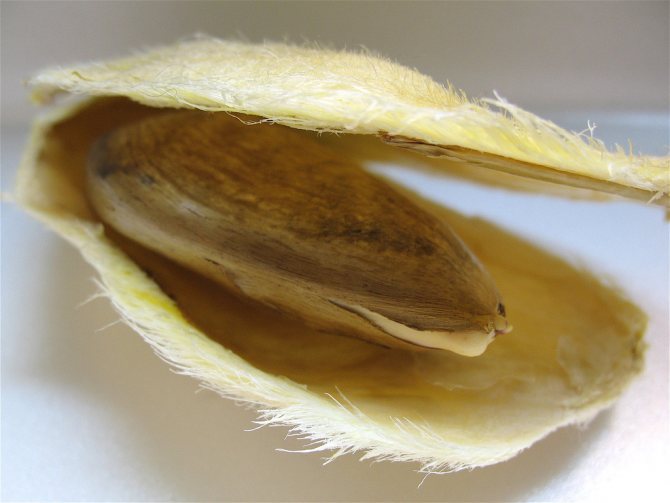

Opened mango bone with seed - Seed germination is carried out in soft water, filling 1/3 cup with it. The water is changed once every 2 days.
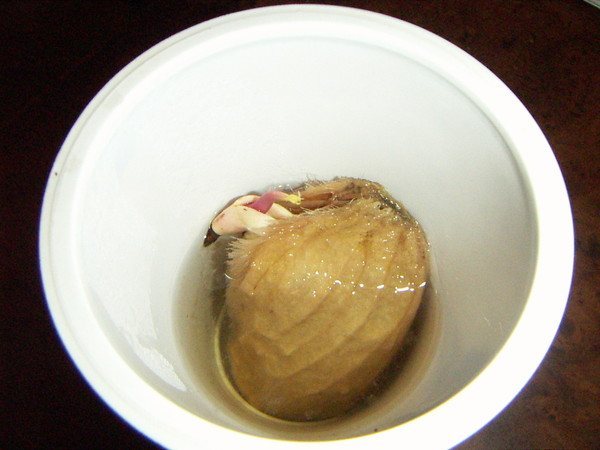

Soon (after a week, two) a sprout will appear. After waiting a couple of weeks, it is planted in a separate deep container. The root will need a lot of space.
- Drainage is placed at the bottom of the pot, soil for flower plants is poured on top, making a depression for the seedling in it, where the seed is placed with the root down, completely covering it with earth and placing it in a warm and bright place.
- We are waiting for the emergence of sprouts, monitoring the moisture content of the soil.
When leaves appear, they are periodically irrigated with warm water. The plant is watered regularly. Overdrying the soil is detrimental to small mangoes.
Care
Requirements for lighting, temperature and humidity
Mango loves sunlight and warmth. The brightest place is suitable for its placement. In insufficient light, the plant weakens and becomes susceptible to disease.
Besides the bright light the plant needs warm (20-26 °C) air of moderate humidity.
Watering
Moderately moist soil is the best option for Mango. This is especially true for young forms that cannot tolerate dry substrate. The plant signals the lack of moisture in the soil with drooping leaves.
During the flowering of the tree, watering is reduced to a minimum, resuming in the same mode only after removing the fruits.
Soil requirements and top dressing
Mango prefers loose, light, well-draining soil.
Top dressing for Magnifera obligatory.
- Balanced mineral fertilizers are applied in the spring. This allows the formation of a dense crown.
- During the active growing season, once every 2 weeks, organic matter is introduced into the soil.
- In the fall, feeding is not carried out.
- Once every 3 years (but not more often), for additional support of the plant, micronutrient fertilizers are applied.
Reproduction
Mangifera can be propagated by seeds and grafting. The second method is more effective.
Graft held in the summer. The grafted forms are planted in the ground. The composition of the earth does not matter, but it must certainly be light, loose and nutritious. Drainage is required.
After grafting, the plants are not allowed to bloom for 1-2 years, removing the inflorescence at the end of its full blooming. The first harvest will be small; in the future, the number of fruits and their quality will increase.
Humidity and watering
At home, mangoes need moist soil in order for the tree to create a familiar tropical climate. Water it abundantly 1-3 times a week with warm water. The soil should dry out a little between waterings. Reduce watering in winter. Spray the tree regularly, especially in winter.
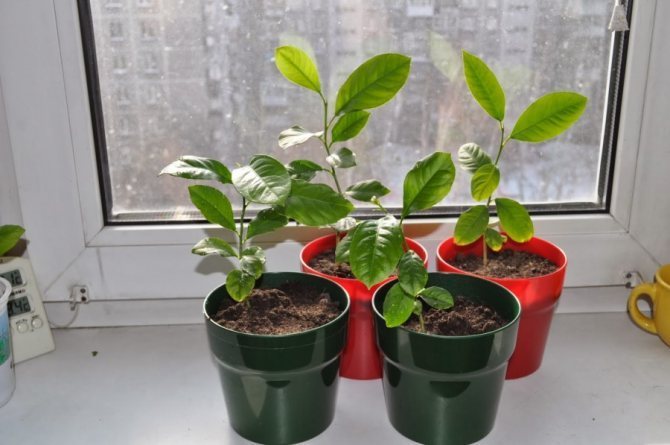

Reduce watering as much as possible during the flowering period. But pay special attention at this time to numerous leaves, they can wilt with a lack of water.
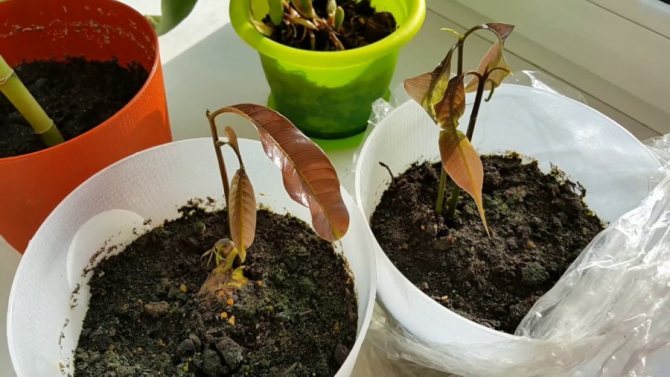

After harvesting the fruit, watering should be reinforced again so that the plant can quickly regain its strength and continue to grow. Maintain moisture in moderation, this is important for young trees, they do not like dry soils.
